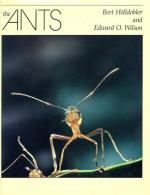
|
| Name: _________________________ | Period: ___________________ |
This quiz consists of 5 multiple choice and 5 short answer questions through Chapter 5 Colony Odor and Kin Recognition.
Multiple Choice Questions
1. In the woodlands of New England, ants move as much soil as what other insect?
(a) Scarab Beetles.
(b) Earthworms.
(c) Centipedes.
(d) Armadillidiidae.
2. How long do Idaho harvester ants typically live after they begin foraging?
(a) Two weeks.
(b) Two months.
(c) Two years.
(d) Two days.
3. Which of the following is NOT part of an ant's head?
(a) The lateral setae.
(b) The mesothoracic spiracle.
(c) The clypeal carina.
(d) The median seta.
4. What is the smallest collection of ants that can still be considered a colony?
(a) 500.
(b) 5000.
(c) Five.
(d) 50.
5. Who removes a newly fertilized queen ant's wings?
(a) She removes them herself.
(b) Her wings dissolve after fertilization.
(c) Her young remove them.
(d) Her partner removes them.
Short Answer Questions
1. Which of the following is NOT a category that authors Holldobler and Wilson claim to be extremely complex in ant colonies?
2. Which of the following species of ants is known to cover their queen during immigration from one nest to another?
3. How many ants are contained in each hectare of soil in the Amazonian rainforest?
4. Which part of an ant's body is used most during kin recognition?
5. Which of the following lands is NOT free of ant species?
|
This section contains 212 words (approx. 1 page at 300 words per page) |

|




